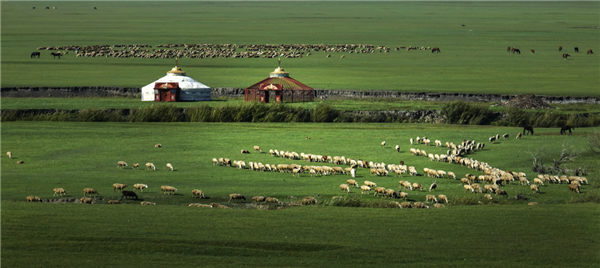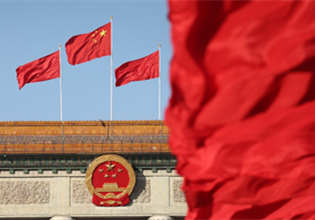Grassland aids nation's green development drive

Sheep and horses graze on pastureland in Chen Barag Banner, Inner Mongolia autonomous region, in September. Photo provided to China Daily
Ting Baatar, a herdsman from the Inner Mongolia autonomous region, had no reservations when it came to suggesting changes to traditional grazing practices that have helped restore and protect the grassland ecosystem.
Raising sheep used to be the lifeblood of tens of thousands of herdsmen in Saruultuya Gastaa, in Inner Mongolia's Xiliin Gol League, but the animals took a tremendous toll on the environment.
The solution Ting, 65, suggested was switching to raising beef cattle-an industry that now has bright prospects.
During the second session of the 13th National People's Congress, the country's top legislature, in March 2019, President Xi Jinping, who is also general secretary of the Communist Party of China Central Committee and chairman of the Central Military Commission, participated in a discussion held by deputies from Inner Mongolia.
Xi said the region's environment should be protected firmly and strictly, without any exceptions. He also called for stronger protection efforts in line with the principle of working out measures that suit local conditions.
"We should explore new ways for high-quality development, which prioritize ecological protection and the green economy," Xi said. "More efforts should also be made to protect the ecosystem and guard the beautiful scenery on China's northern border."
Rich resources
China is a country rich in grassland resources. Its natural grasslands, the world's biggest, cover an area of 3.92 million square kilometers-12 percent of the global total-according to the National Forestry and Grassland Administration.
The country's grasslands occupy more than 40 percent of its total land area-even larger than the combined area of farmland and forests, said Liu Jiawen, deputy director of the administration's Grassland Surveillance Center.
However, the grasslands suffered from serious overgrazing, leading to degradation and desertification in the 1980s.
Overgrazing, drought and insufficient protection resulted in severe degradation and desertification in Xiliin Gol League. In Saruultuya Gastaa, 70 percent of the grassland suffered from degradation.



 Print
Print Mail
Mail





